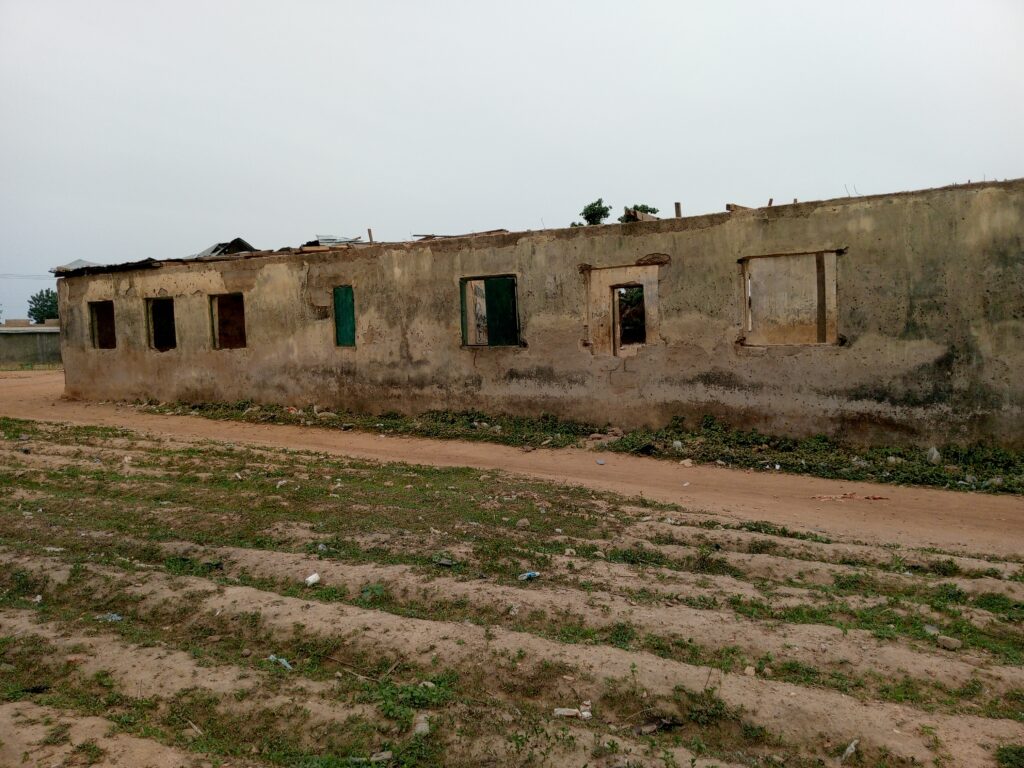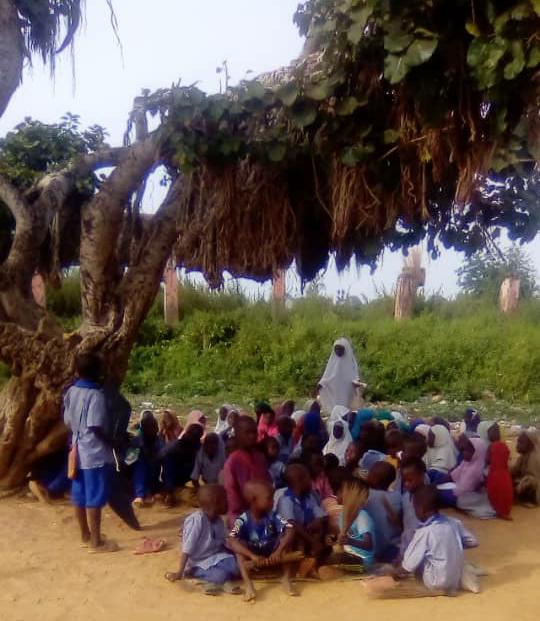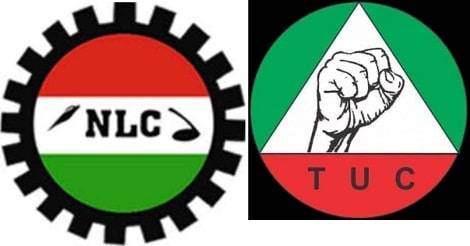By Ghazali Ibrahim
In September, on a Tuesday morning, children of school age were seen working on a farm in Kimo Community, an agrarian settlement in Ngaski local government of Kebbi state. Kimo Model Primary School, the only primary school in the community, is approximately 35 kilometres away from this farm.
In this community visited by this reporter, many children are out of school, and residents point to the poor state of facilities in the primary school as a major reason for this.
During the visit, over 150 pupils were observed gathered under a tree, studying Hausa language.
Hamza Aliyu, a teacher at the school, noted that the lack of classrooms and a conducive learning environment is impacting both the students and teachers.
“The school has three blocks of classrooms, but none of them are suitable for learning. They are all dilapidated and uninhabitable for students, and we all know that a quality building can aid the learning and teaching process,” he said.

UDEME found that the school consists of three buildings with two classrooms each, but all of them are unsuitable for learning. The roofs have been blown away, and the walls have collapsed to the ground. The only classroom with a roof had its walls supported by planks, raising concerns among the school management about using it due to safety concerns.
According to The Punch, citing data from the Universal Basic Education Commission (UBEC), 24 states across the country currently face a shortage of 260,551 classrooms in public primary schools. Kebbi state itself has a deficit of 4,413 classrooms in public primary schools.
The headmaster of the school, Dalhatu Jibrin, expressed that the school has suffered for many years, facing hardships with no assistance from government agencies.

“We usually enjoy learning during the dry season, but during the rainy season, learning is not convenient and comfortable. There is no place we can manage to place the pupils. When there’s no rainfall, academic activities proceed seamlessly, but the moment it rains, we immediately release the pupils to go home because there is nowhere to hide,” he explained.
Usman Abdullah, a teenage pupil at the school, expressed his frustration with the situation. He had visited the city of Yauri and saw students of his age learning in a comfortable environment. However, his own school in the village lacks a suitable building for learning, except studying under a tree.
“I feel sad every time I look at the building in my school,” he lamented.
“When I visited the city of Yauri with my brother on a condolence visit to one of our family members, I noticed the lifestyle and luxuries associated with attending school in the city. Children of my age were seen in well-furnished classrooms,” he added. “I have always dreamt of being in such a conducive classroom since I visited Yauri city, but it’s a shattered dream because my school couldn’t provide us with the necessary space for learning.”

Lawali Sale, the Area Education Officer for Ngaski LGA, revealed that schools in other villages in Kimbo, Lakatu, and Malamawa also lack suitable classrooms. All these villages share the same local government with Kimo. These government-established schools lack basic learning facilities.
Mr Sale stated that the issue of insufficient classrooms is widespread in the state, primarily due to a lack of adequate support from the government and relevant agencies.
Inadequate Budgetary Allocation
In 2021, Yusuf Sununu, the lawmaker representing Ngaski/Yauri/Shanga Federal Constituency, initiated a project to construct a block of two classrooms as part of his constituency projects. The project, funded with 10 million naira, was intended to be situated at the primary school to improve the educational foundation in the community. However, inadequate budget allocation hampered its execution.
When UDEME contacted the lawmaker who facilitated the project, he claimed to be unaware of the project’s status. He said he could not find the project in the budget, and thus believed it had not been awarded.
“I didn’t know about any project like that, and I’m not sure that something like that has been awarded through my intervention as a constituency project,” he stated. “I was not aware, and when I checked the budget and didn’t find it, I thought it had not been awarded.”
He pledged to contact the office of the director of public procurement for UBEC to investigate why the project had not been executed.
The investigation revealed that the project was not awarded to anyone once it was realized that the budgeted amount was insufficient for the project. A response from the Director of Procurement at UBEC confirmed that the project was not executed due to budget constraints.
The Director of Procurement, Umar Umar, explained that the funds budgeted for the project were insufficient to construct a block of two classrooms. Since the budget could not be reallocated for a different purpose, the released fund was mopped up and thee project abandoned.
As a result of this, the school remains in a dilapidated state without proper classrooms for learning.
Community Intervention
Due to the lack of functional classrooms, the condition of Kimo Model Primary School prompted a joint intervention by the Student Best Management Committee (SBMC), the village head, and the district head. They devised a plan to remove the old zinc and planks from one of the dilapidated buildings to construct a temporary shed for learning.
Muhammad Tafidan Kambuwa, the SBMC Chairman, and a lecturer at the College of Basic and Advanced Studies (COBAS) in Yauri, expressed his distress regarding the state of the school buildings.
“Kimo Model Primary School is the only school we have in this community. This is where our children go. It is very sad for us to see it in this deplorable state,” he said.
“We all know that children are the leaders of tomorrow, and it is our responsibility as parents to provide them with proper and sound education, especially in the knowledge of the western world. However, this is not possible when the children are exposed to various weather conditions during their studies.”
The proposed intervention is a temporary measure, as the zinc becomes hot after sunset, making the makeshift classrooms uncomfortable for the students.
This report was produced as part of the UDEME project by the Centre for Journalism Innovation and Development (CJID).


